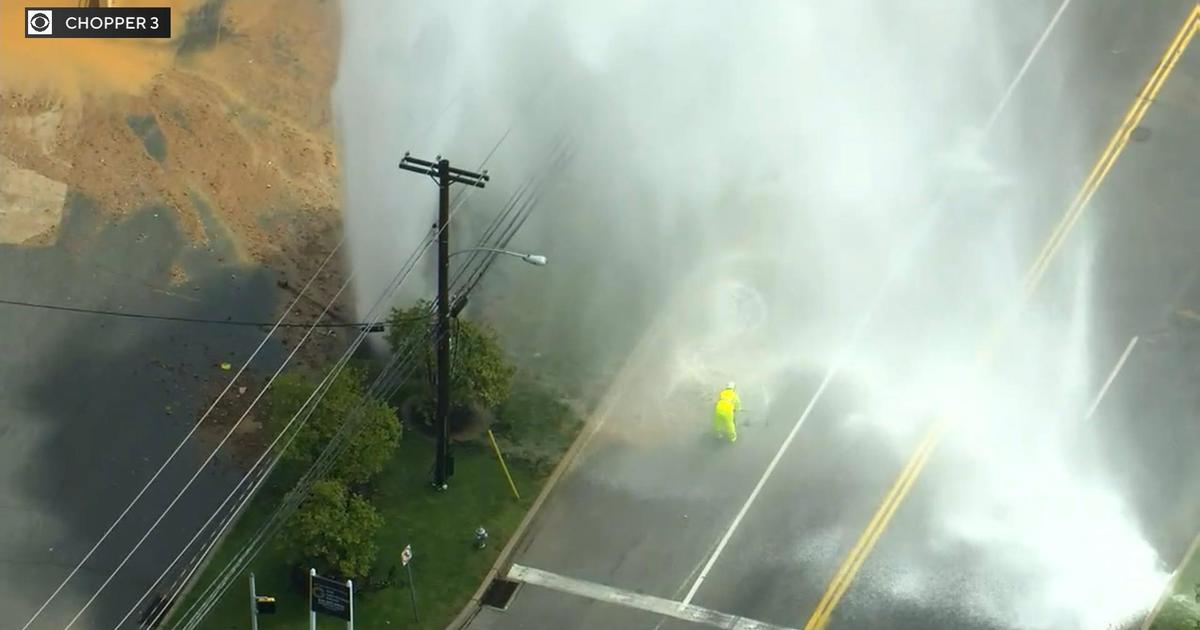Here's what to know about the Boeing 737 Max 9, the jet that suffered an inflight blowout
The inflight blowout on an Alaska Airlines' plane on Friday night is prompting scrutiny of the aircraft involved, the Boeing 737 Max 9. The incident comes after other safety issues have been linked to Boeing's Max line of aircraft, heightening concerns about the jet's safety.
Here's what we know so far.
What is the Boeing 737 Max 9?
The Boeing 737 Max 9 is part of the aircraft manufacturer's Max line of jets, introduced with the 737 Max 8 jets, which first took to the air in 2016, according to Airways Magazine. The Max line is designed to be more fuel efficient than earlier 737s, making them more economical for airlines to operate.
The Max 9 jets, certified by the Federal Aviation Administration in 2018, can seat up to 220 passengers and have a range of 3,300 miles, according to Boeing.
Which U.S. airlines fly the Boeing 737 Max 9?
Currently, there are only two airlines in the U.S. that fly the Boeing 737 Max 9: Alaska Airlines and United Airlines. United is the biggest operator of Max 9s in the world. The two airlines together operate about two-thirds of the 215 Max 9 aircraft in service around the world, according to to aviation analytics firm Cirium.
Both Alaska and United have grounded their Max 9s as the Alaska accident is investigated, leading to hundreds of flight cancellations as of Monday afternoon.
What is the safety history of Boeing 737 Max jets?
The Boeing 737 Max line has a troubled history, with two fatal crashes of the Max 8 model within five months of each other, in 2018 and 2019.
The first crash, in October 2018, involved a 737 Max 8 operated by Indonesia's Lion Air that killed 189. The second incident was in March 2019, when an Ethiopian Airlines flight, also a 737 Max 8, crashed minutes after take off, killing 157 passengers.
In response to those crashes, the FAA in 2019 grounded the 737 Max 8 and Max 9 while it investigated. Boeing changed an automated flight control system implicated in the crashes.
Last year, the FAA told pilots to limit use of an anti-ice system on the Max in dry conditions because of concern that inlets around the engines could overheat and break away, possibly striking the plane. And in December, Boeing told airlines to inspect the planes for a possible loose bolt in the rudder-control system.
However, those past issues are unrelated to Friday's blowout, which is an exceedingly rare event in air travel.
What is the "door plug" that flew off in mid-flight?
The "door plug" that flew off during Friday's flight was in use because the Alaska Airlines' jet was configured to hold fewer than the maximum 220 passengers that could be packed onto a 737 Max 9.
According to CBS News' Kris Van Cleave, airlines that reconfigure jets frequently use panels that cover unneeded exit doors, essentially turning the unused exit door into another window.
"For the most part they come with those exit doors plugged with this piece, and if you are a passenger you wouldn't even know there is a door there," Van Cleave told CBS News. "It would look like a normal window."
The piece weighs about 63 pounds and is 48 inches tall and about two feet wide, Van Cleave noted.
Was anyone injured on the Alaska Airlines flight?
None of the 171 passengers or six crew were seriously injured but the rapid loss of cabin pressure caused oxygen masks to drop from the ceiling. National Transportation Safety Board Chair Jennifer Homendy said the two seats next to the part that tore off were unoccupied.
The missing door plug has been found. Why is that important?
The missing door plug was found near Portland in the backyard of a schoolteacher, with the National Transportation Safety Board saying that the discovery could be a vital piece of evidence in the investigation into the cause of the blowout.
"At the opposite end of the aisle is another door plug, so they will also be able to compare the door plug that was blown off wit the one that remains on the plane," Mark Walker, a reporter with the New York Times, told CBS News. "They can compare if there were missing pieces, if they were damaged."
Since the blowout, what issues have emerged about the door plugs?
United Airlines and Alaska Airlines say they found loose bolts on door plugs on several of their grounded Boeing 737 Max 9 planes.
Specifically, United Airlines said Monday it has found "instances that appear to relate to installation issues in the door plug – for example, bolts that needed additional tightening" during its preliminary inspections on Saturday. Loose bolts and other parts were found on at least five aircraft, according to trade publication Air Current. Assembly, installation and quality control of the door plugs is the responsibility of Boeing and Spirit AeroSystems, which makes the door plug, the publication added.
Spirit AeroSystems also worked on the installation of the door plug that suffered the blowout, according to Reuters. In a statement on Monday, Spirit AeroSystems said it is working with Boeing on the issue and that it would share more information "when appropriate."
Alaska Airlines said Monday night that "Initial reports from our technicians indicate some loose hardware was visible on some aircraft" when the technicians were preparing the airline's Max 9 fleet for formal inspection.
Were there signs of problems with the Boeing 737 Max 9?
The NTSB's Homendy told reporters that pilots reported that the same plane experienced three pressurization warnings, from cockpit dashboard lights, between December 7 and January 4. At least one occurred in-flight.
Because of that, Alaska Airlines had decided that that particular jet shouldn't fly long routes over water.
"They even flagged the plane for additional maintenance. What maintenance never had a chance to be done because of the fateful flight on Friday," he noted.
For how long will the Boeing 737 Max 9s be grounded?
The length of time is unclear, but the FAA on Monday said the aircraft "will remain grounded until operators complete enhanced inspections which include both left and right cabin door exit plugs, door components and fasteners."
It added, "Operators must also complete corrective action requirements based on findings from the inspections prior to bringing any aircraft back into service."
—With reporting by the Associated Press.



